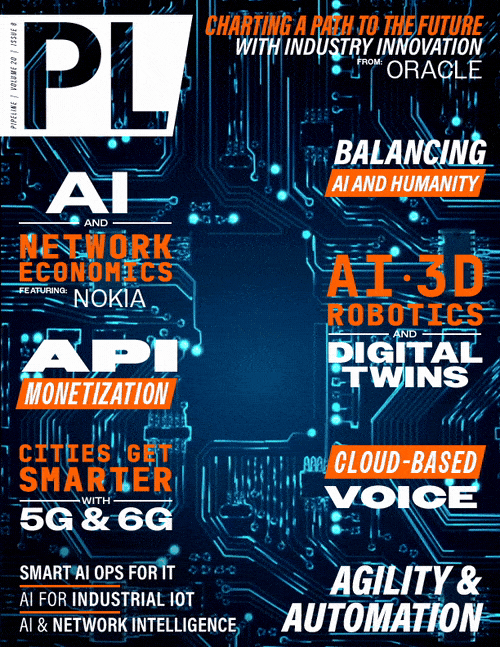AI for Network Intelligence
Network Design
There is a lot of data that is in the hands of network operators and business owners. It is what they do with that data that makes a difference, particularly with network design. AI can have a huge impact. With such tools as predictive and prescriptive analytics, operators can present "what if" scenarios — the ability to ask “what if” to assess and evaluate the design of the network to make improvements that can help reduce cost, improve performance, and deliver smooth operations. Re-configuration of the network will be made simple as AI will not only provide intelligence on what to do but also execute what needs to be done. Network operations can experiment with new and improved implementations of new network design practices in real time and in a simulated fashion that can be implemented quickly and seamlessly. Optimization will be a real-time executable with AI throughout the network from core to premise. Finally, true network optimization becomes a greater reality with the capabilities that AI can deliver to operators and customers.
Security
As new technologies such as SASE for security enter the networking equation, the bigger question around secure networking becomes paramount, particularly with large customers with vast amounts of their own customers' data. AI can build on and prove out security solutions to make the business operations less vulnerable. AI will be able to run security breach scenarios in a simulated fashion to look for potential breaches and vulnerabilities. AI will also allow network operators to look at how modern technologies such as SASE may perform to improve security in an enterprise’s network environment, particularly SD-WAN environments. Peace of mind on the customer’s part will become commonplace as AI provides a full and unadulterated view of one’s network security. If a breach occurs, AI will be able to provide information on the occurrence and how to fix it immediately and, in the future, faster than ever before. Secure networks have never been more important as business operations expand and more vulnerabilities become a reality. AI can help improve the never-ending quest for fully secure network operations.
Business Intelligence
We mentioned earlier the vast amount of data the network holds, much of which can directly affect business operations. As AI becomes more of a reality in all kinds of application prompts, the business intelligence (BI) it can better help provide is unfathomable. It could be the lifeblood of organizations today and in the future. New AI implementations will be able to provide any intelligence about the network that is needed in real time from premise to core. AI-driven BI will identify business vulnerabilities associated with the network and its operations so things can be addressed in advance. Predictive and prescriptive analytics, the core of BI, will offer information about the network based on business operations that will help the customer plan better, adjust operations when needed, and prescribe ways to improve the network to help the business. AI in BI will also provide answers to time management to improve business operations by analyzing network data. In summary, AI can enhance BI applications at the network level and provide insight to improve network operations to help customers improve and enhance business operations.
Conclusion
As with many other applications of AI, the opportunities are limitless when it comes to network solutions. It can simplify communications and understanding of the network through natural language, allow for direct interaction with network management from the desktop, leverage the generative aspect of AI, significantly improve the network’s ability to self-heal, identify (and potentially solve) problems, spot opportunities for improvement, and more effectively seek out and evaluate anomalies that could be associated with a security issue. AI can have a profound impact on the network in a number of ways to help enterprise customers make their businesses perform better.



















